TO MANY, those who strap themselves into a high-speed race car for the fun of it should be dismissed as crazy, a categorisation that those in the cars would strongly reject. But in the 60-year history of drag racing in Australia, one made it a badge of honour by having it emblazoned down the side of his car.
This article was first published in the January 2020 issue of Street Machine
John ‘The Crazyman’ Taylor passed away in September, aged 73, but the tales of his exploits in trying to go as fast as possible as cheaply as possible live on.
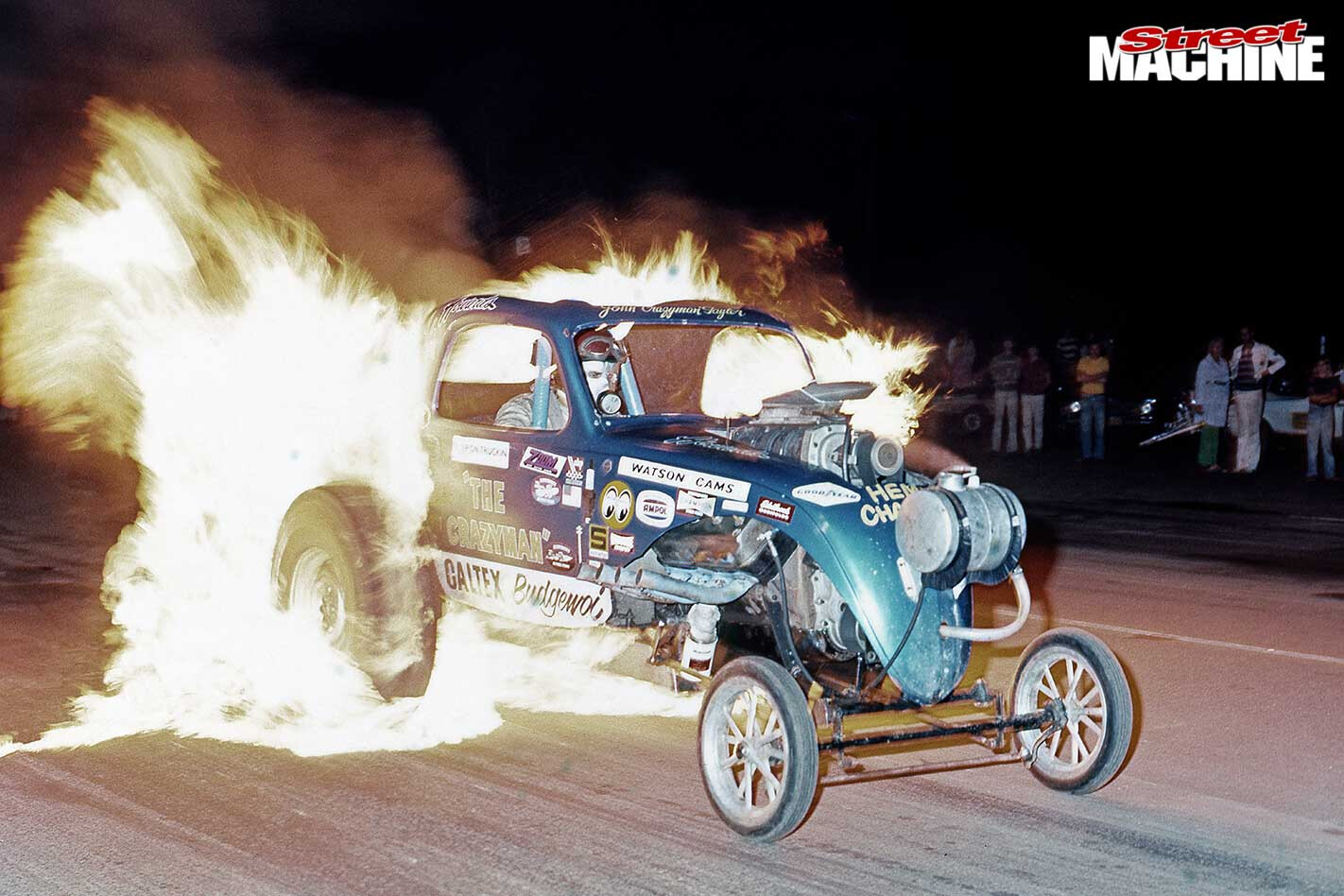
Taylor’s signature move was a pool of burning fuel under the rear tyres to produce a big show, before it damaged the car or driver. However, the practice was eventually banned
Taylor was, by any measure, a budget racer. His career was spotted with cars that were pushed to the far limits of their structural capabilities, but were kept going on the promise of a major refurb if he could just win that next race.
After the old Y-block Ford quit, Taylor dropped a 331 Hemi into his ex-Warren Armour dragster. Note the big old ex-military cargo drop ’chute on the rollbar
Beneath the rough and ready surface, Taylor was a very determined racer doing the best with what he had. He rose rapidly to become one of the lions of the fuel altered wars in the early 70s, evolving with most of that breed into the early nitro Funny Car crowd as the decade rolled on.
Taylor could see the writing on the wall as Funny Cars gained recognition in 1974, so his Fiat altered was adaptable to either bracket. Here he battles Norm Oakey’s rear-engined Monaro flopper at Castlereagh in 1974
Taylor started his racing days hanging out with Sydney-based altered racer Ron Gardner, and once recalled crewing on Gardner’s Y-block Ford-powered Fiat Topolino at the 1967 Nationals at Surfers Paradise Raceway. That early experience welded him to the notion of altereds as the most fun you could have on the quarter-mile, but someone in the pits had a dragster chassis for sale. It was pretty crude, but at just $300 was too cheap to pass up. So Taylor became a dragster racer.
The Crazyman was never happier or more successful than when he was strapped into his Fiat altered
That chassis turned out to be a venerable part of Australian drag racing history. Built in 1959 by Victorian Greg Goddard, it was just the second purpose-built dragster constructed in Australia. It had been passed on to Melbourne speed shop owner Eddie Thomas and became the first car in the country to break the 140, 150 and 160mph barriers, and the first to run 10s, and later, nines.
Familiar with Y-block Fords, Taylor fitted a carbied 292-cuber and debuted it at Sydney’s Castlereagh track in April 1968. It was no great shakes, even by the standards of its day, but the times gradually started coming down and in September it went 12.77.
Hungry for more power, Taylor fitted a 6/71 GMC blower and Scott injector, but the Ford started munching conrods and crankshafts on a regular basis, so after five months a 331ci Chrysler Hemi was sourced and swapped in. The old chassis, rapidly running out of capacity, was swapped for a much lighter version purchased from friend Warren Armour. Though it had been built to run a Holden six, with the blown Hemi on board the times came down into the 9.7s.
The power was more reliable, but now the clutch was being pushed beyond its limits, and after two units failed him Taylor decided to move on and return to his original love – altereds.
This was the end of Taylor’s early Funny Car career when he ran off the end of the Oran Park strip and into an inconveniently placed cattleyard
Old mate Gardner had his Fiat Topolino for sale, and, as he knew the car, Taylor snaffled it. The Fiat had been built in 1967 and was fairly state-of-the-art for its time, but the world of drag racing was changing rapidly in the 1970s, and Taylor was harbouring ambitions the car could scarcely keep up with.
Crew chief and brother Mick (left) and Top Fuel racer and good friend Warren Armour check with Taylor in the fire-up lanes at Surfers Paradise, following the debut of his new Fiat altered in 1973
The Hemi was a lot heavier than Gardner’s old Ford Customline engine. I recall standing next to Taylor while he hoisted the Hemi out for maintenance one night, and as the block lifted up the chassis rails started arcing up with it, and rather messy welds on the vertical braces started breaking and popping away. When this was pointed out, Taylor simply said: “Oh, don’t worry. When the motor goes back in and they all close up again, I just re-weld them.”
Taylor’s first race car was this ex-Greg Goddard, ex-Eddie Thomas rail, built in 1959. It was already out of date when he bought it for $300 in 1967
Probably the thing that saved the chassis was the lower torque of the 331-cuber, assisted by the smaller tyres, which gave it a more liveable punch off the line.
To protect his face, Taylor had a mask with one large breather smack in the middle, giving him the appearance of a large rat, though he was anything but. Whether driving lock-to-lock or gun-barrel straight down a quarter-mile, it was all the same: deadly determined to go as fast as possible on a budget.
Taylor’s introduction to altered racing was an adrenaline-laced moment at the first round of the 1971-72 Ampol Series at Surfers. There were no required half-passes in those days and, storming through the finish beams at over 140mph on his first pass, Taylor pulled the parachute release only to discover a peculiarity of airflow over the top of the Fiat. He was running the cargo drop ’chute (much cheaper than a purpose-made racing ’chute) from his old dragster and had taken the seemingly logical precaution to mount it vertically above the top of the rollbar, where it protruded through the open roofline. But air was pouring into the body, so that’s where the ’chute went – all over Taylor. He bailed frantically, trying to push all that ex-military silk out over the back of the car and into the airflow while trying to keep the car on line in a minimal braking area.
The early 70s were the heyday of the blown altered wars and many shows were built around their often erratic handling and wild racing. Here Taylor takes on the winged ‘Psycho II’ altered of Cowin in 1971
This happened on the car’s second run as well, and the third – by which time the constant strain of running off into a cow paddock broke a front stub axle. Taylor and his crew chief, brother Mick, rushed to a nearby garage and borrowed a welder to re-attach the stub axle and made it back in time for the bracket eliminations. Despite a somewhat haphazard wheel alignment, Taylor was runner-up to local star Jim Reid.
Just after this, at Castlereagh, announcer Denis Walford made a passing reference to Taylor as “that crazy man” and Taylor instantly grabbed on to it and had ‘The Crazyman’ lettered onto the side of the little Fiat.
By June’s 1971 NSW Championships, the Fiat was running consistently in the nines. It went 9.80 in the final but lost to Graeme Cowin’s ‘Psycho II’ winged altered. At the Mr Holden meeting in August, it went 9.36@151mph to best Ian Splatt’s formidable ‘Bounty Hunter’.
Graeme Cowin (left) and Taylor fooling about at the 1971 Winternationals. Taylor’s single-breather face mask was a major identifier at any race meeting
At that year’s Nationals at Castlereagh, Sydney racer Bruce Phillips debuted his Torana Funny Car with a fire burnout show borrowed from US racer Don Johnson. A pool of highly flammable Toluol under the rear wheels was set alight and produced a spectacular ball of orange flame when the wheels were spun in it. This was the sort of stuff that sent crowds wild, and Taylor made it his signature move. He toured from Townsville to Perth, taking the fiery show with him, and the bookings were solid, until the practice was banned.
Taylor was booked for match races all down the east coast, duking it out in best-of-three contests with any number of other stars of the day. On one memorable occasion he was pitted against the Mustang Funny Car of Jim Read. Crazyman’s car was push-started, while Read’s was fired with a starter motor. Read sat behind the burnout area waiting for the Fiat to be push-started while Taylor sat out on the track waiting for Read to fire his motor. Eventually Read cranked it over, so then Taylor signalled Mick in the push car to start moving. By the time the Fiat had fired and turned off the track and around behind Read, Read decided his engine was too hot and shut off, climbing from the car and gesturing wildly at Taylor. Mick climbed from his wagon, walked across and flattened Read in the burnout area.
By the end of 1972, Gardner’s old Fiat was showing its age, so Taylor began work on a new chassis, with advice from Warren Armour. It was lower and sleeker, with a proper ’cage in it, and out front sat a real 392 Chrysler. The whole package was put together with a Topolino body, but with a view to possible future conversion to a Funny Car. It had moveable engine mounts so that the 106-inch wheelbase frame could have the permitted 25 per cent engine setback as an altered, or the unlimited setback allowed in Funny Car.
As an altered, the car ran a best of 8.89 and 169mph in April 1974, before Taylor made the switch to Funny Cars with a Capri bodyshell and the backing of Winston tobacco. This was at a time when the nitro-fuelled floppers had gained their own official bracket and several cigarette brands were testing the waters, following the high-profile support from Rothmans through one of their brands.
Taylor in the seat of his Corvette Funny Car. It was a long way from the haphazard days of his first Fiat altered
After adjusting for the changes with the new skin – lowering the rear and raising the front so Taylor could see all the Christmas tree lights – the Capri began to improve, dropping to an 8.23 and upping the top end to 184mph. Taylor claimed runner-up in Funny Car at the 1975 Nationals, but in May 1976 his charmed life on the edge came unstuck.
Competing at Oran Park’s second drag race meeting, run along the main straight of the Sydney race circuit, Taylor’s ’chute failed to deploy. If it had happened at the meeting before, it would have been disastrous, as at the end of the limited braking area was a concrete wall running around a tight corner. This had been remedied by placing a gap in the wall, allowing cars to continue on straight ahead, which Taylor did, except that the additional dirt run-off was still fairly limited and at the end of that was a sharp drop into a cattleyard made from sheets of steel. The consequence was a badly torn-up Capri and the decision that this drag racing was just a little too dangerous. Taylor called it quits.
And so it remained until Sydney got a new drag racing venue at Eastern Creek. It seemed Australian drag racing’s time had come – there were big turnouts across the country, new cars were being built, records being broken.
Taylor went to the States in 1992 and returned with a Corvette Funny Car with a 496 KB Hemi. The set-up was for an alcohol operation, avoiding the excesses of nitro consumption in what looked to be a more affordable bracket.
Over the next four years he toured all the major meets and venues along the east coast, knocking his performances down into the mid-sixes, occasionally running just a small percentage of pop when there was a gap in a nitro field and he could pick up a better payout for running in the feature bracket.
For Taylor it was often about the money. Some racers seem to accept that you’re unlikely to go racing and show a profit, let alone pay your bills, while some argue that it’s the racers who draw in the crowds and therefore deserve some reward. Any conversation with The Crazyman was going to run that line.
While his brother and crew chief Mick ducks clear, Taylor gives his Winston Capri Funny Car a bootful at Castlereagh in the mid-70s. Taylor joined the flopper wars when they took over from the altered days
In a 1972 interview, Taylor said: “Look, some promoters still don’t know what a good show is. That’s where the money’s got to go. Never mind flash strip facilities first, spend the money on bringing out the big names to race. People come out to see drag racing for the personalities, not only the cars; they want to see the stars run.”
John ‘The Crazyman’ Taylor was a unique figure in the Australian drag racing firmament. He’ll be remembered not only for his determination and strongly held opinions but also for his willingness to push himself and his parts to the limit, usually with a grin across his face and a belief that it would all be good in the end.
Unfortunately, the end came on 7 September 2019, when Taylor passed away due to long-held diabetes. A resident of Temora for a number of years, Taylor never married and left no immediate relatives, his brother Mick having passed over a decade ago.
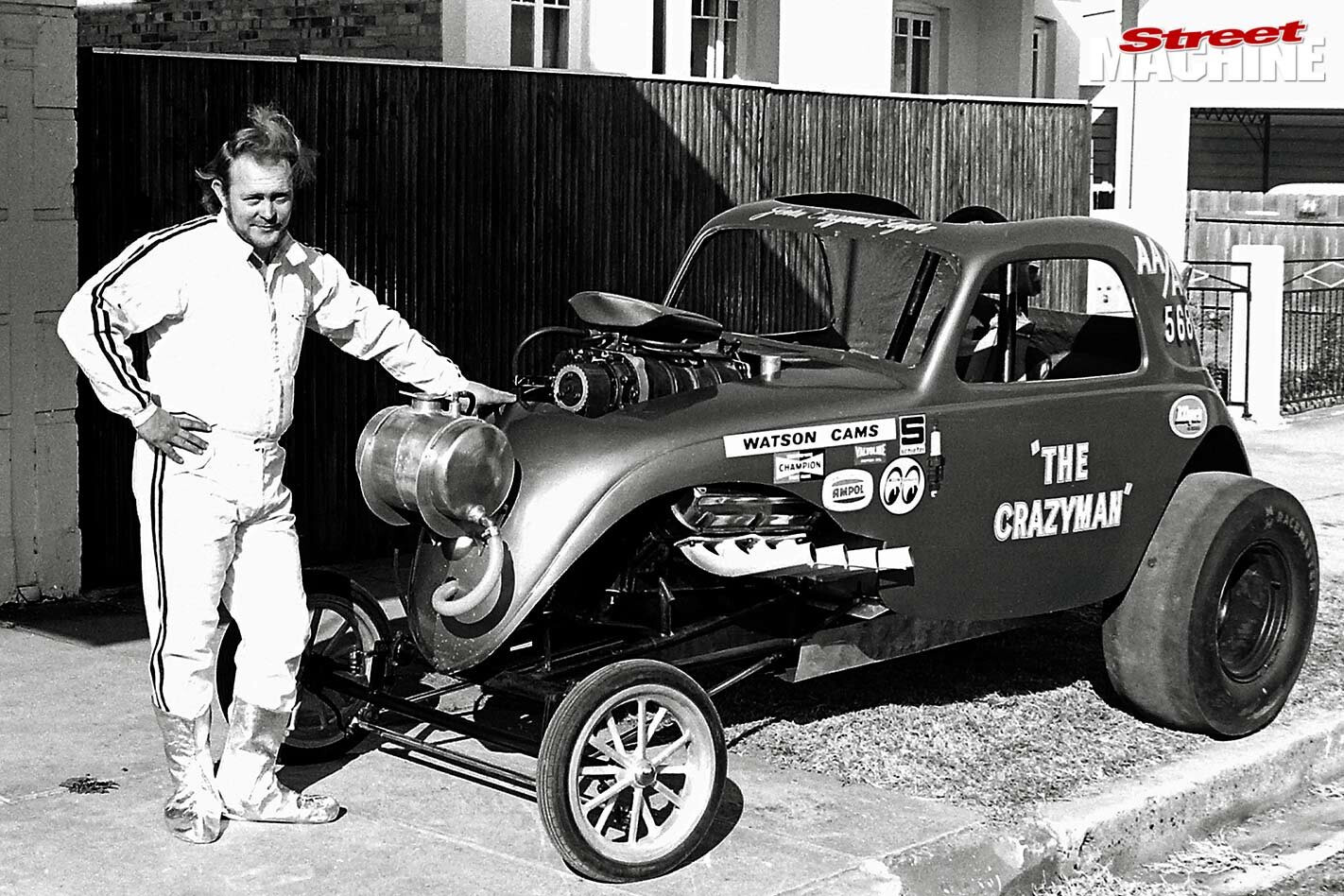
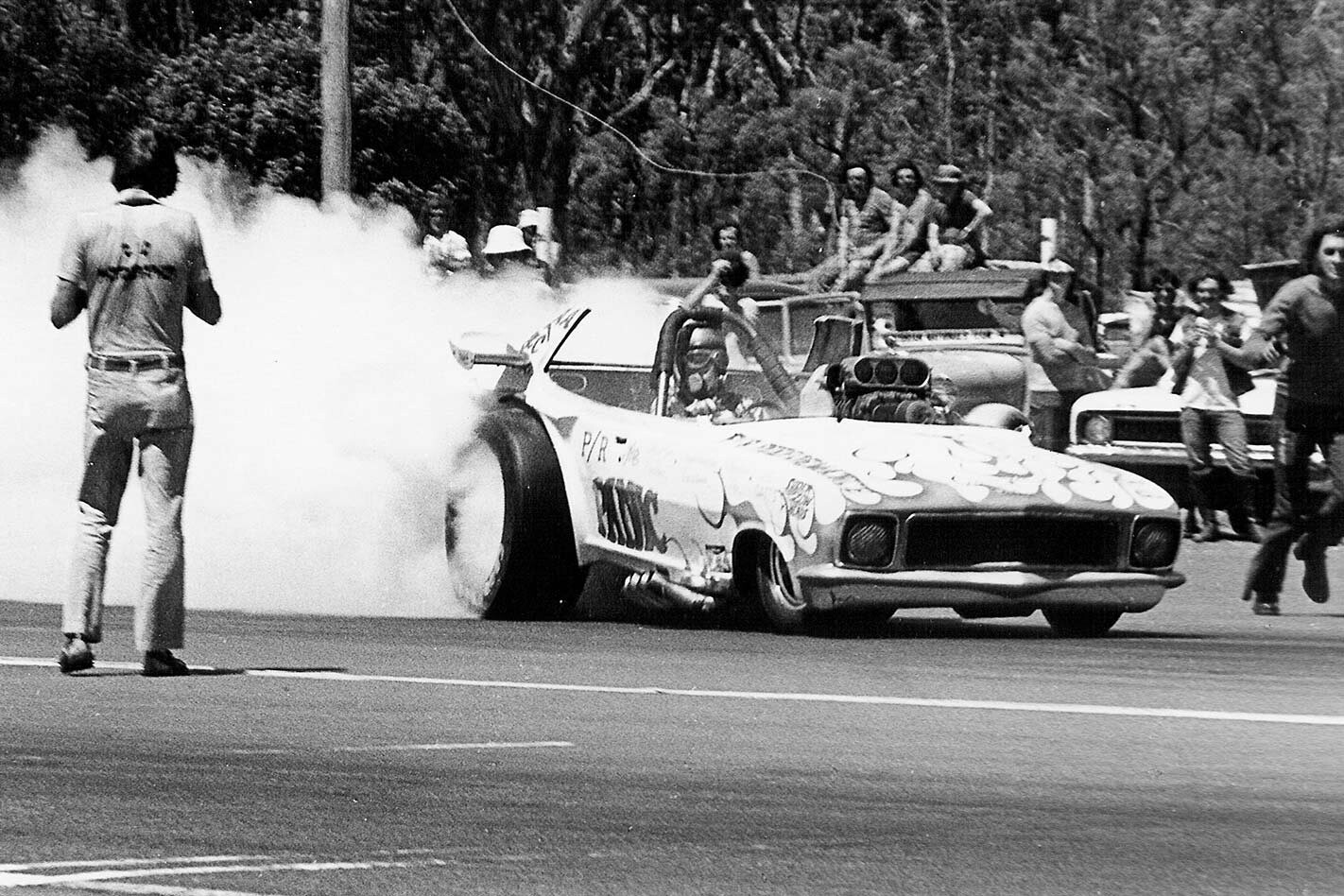
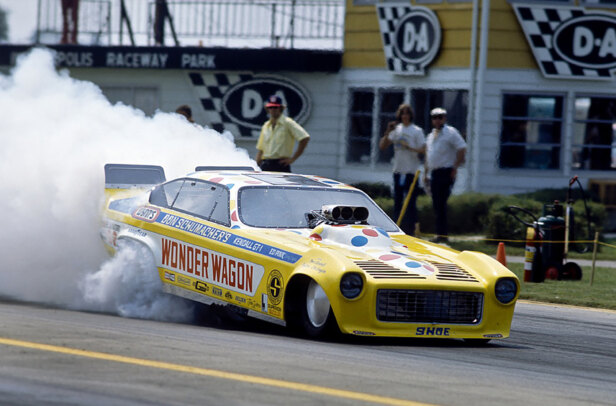
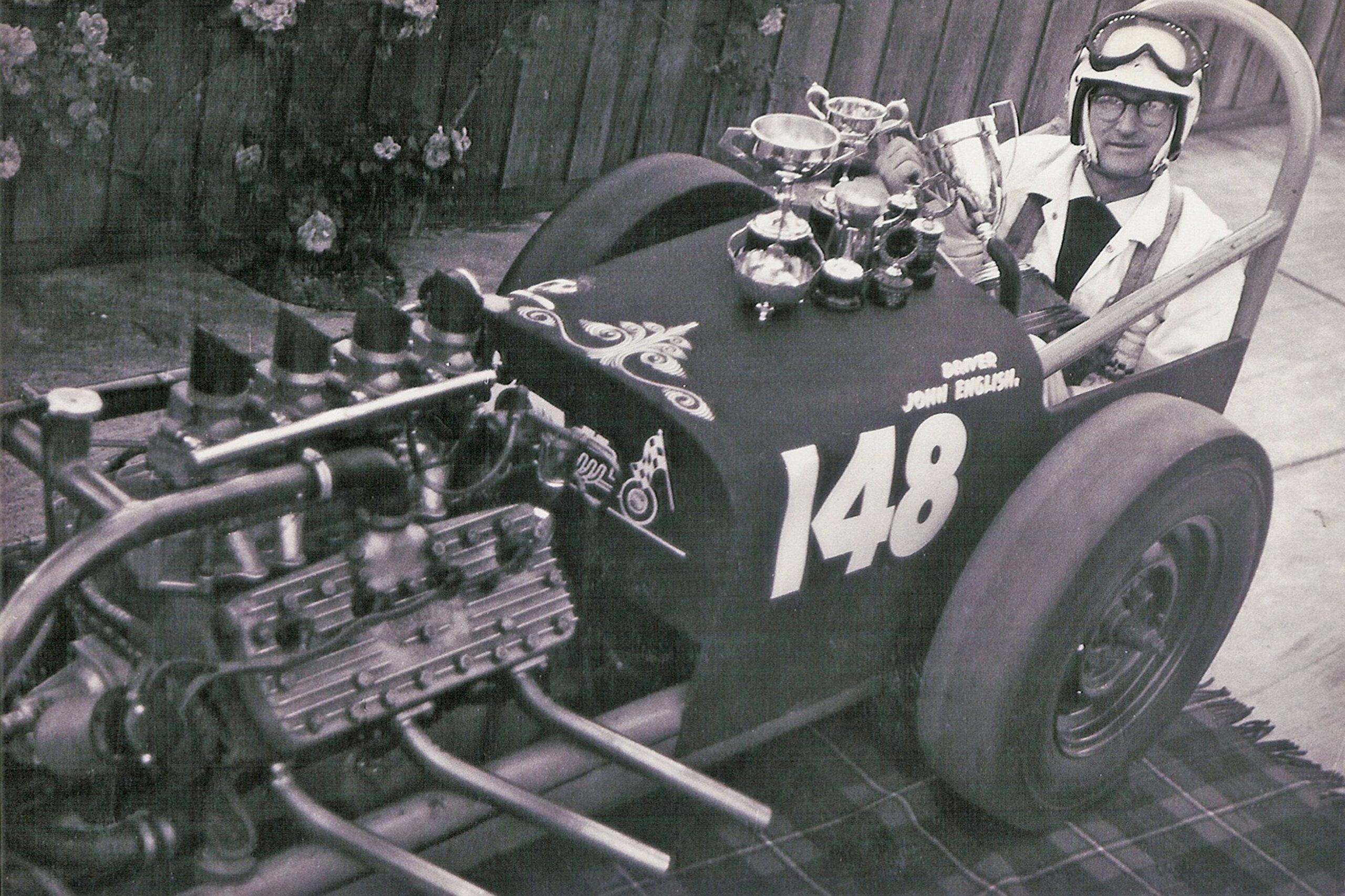
Comments